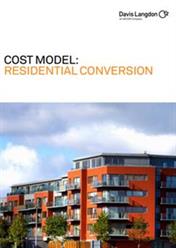Cost Model: Residential Conversion, January 2012
The need for new homes is not in dispute. Housing output has declined to the point where current outputs are less than 50% of 1980 levels and at their lowest in England since 1923. In 2010, the private sector increased the number of completions but these were still two thirds of the number it was building in the mid-2000s.
According to the Institute for Public Policy Research (IPPR) there is a projected housing shortage in the UK of 750,000 units by 2025. Lending to first-time buyers continues to fall, with lending down 17% on the same period last year. And according to research carried out by the Smith Institute, home ownership is likely to fall by two million in the next ten years with the private rental sector set to grow to around 25% of the market. Supply of land for housing remains constrained due to the lack of land and buildings fit for development and conversion, whilst the planning system remains burdensome, expensive and uncertain. In fact 40% of local authorities are unable to identify a satisfactory supply of land for new homes and many of these authorities are in areas of highest demand.
The position is clear. A more diverse housing supply is needed to accommodate different tenures, with the greatest need reserved for affordable housing and the predicted growth in the intermediate rental sector. Local plans need to identify the land and buildings allocated for housing and ensure the necessary support services are in place. And buildings need to be flexible and adaptable to accommodate changes to the way people live and use them.
Return to top ↑

